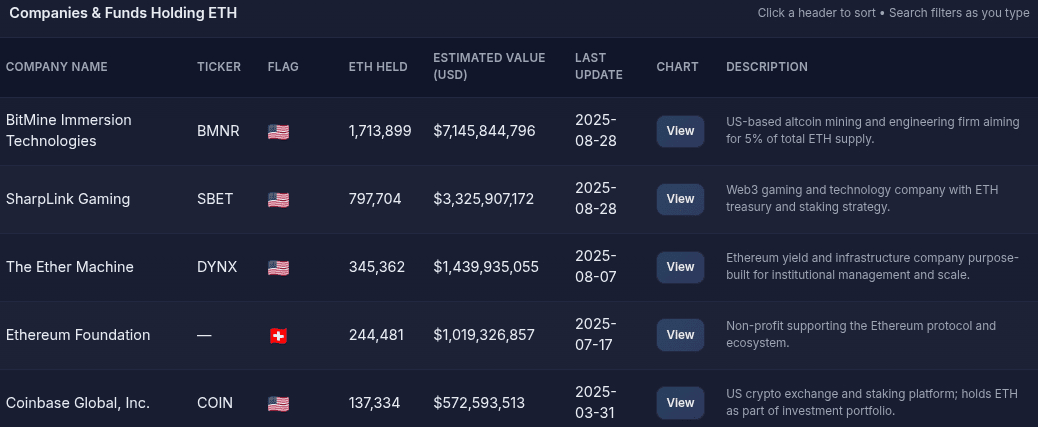The price of Ethereum has returned to the spotlight following a prediction by Tom Lee, the co-founder of Fundstrat and head of BitMine. The strategist claims that Ethereum could reach $12,000 or exceed it by the end of the year. His vision is based on institutional adoption, the integration of artificial intelligence, and BitMine's role as the largest investment portfolio for Ethereum.
Nonetheless, this expectation was not without controversy. Andrew Kang, an investor and analyst in decentralized finance, believes that Lee's hypothesis lacks a solid foundation and that Ethereum faces structural limitations. In this article, we will analyze both perspectives to better understand the debate.
Ethereum is a decentralized public blockchain that enables the creation of smart contracts and distributed applications. Tom Lee sees this ecosystem as having a key competitive advantage: its neutrality. According to him, Wall Street and the U.S. government prefer to work on a network that is "not controlled by a single entity."
Lee claims that Ethereum will be at the center of the next technological wave, where artificial intelligence and robotics will require tokenized economies. In his vision, Ethereum will become the digital fuel for this structural shift, paving the way for a massive increase in its value.
BitMine, which he heads, has shifted its model to an Ethereum treasury. Since then, its market value has grown from just $37 million in June to over $9.4 billion today.
BitMine currently holds over 2.4 million ETH, making it the largest Ethereum treasury in the world and the second largest treasury in the crypto sector after Strategy (formerly known as MicroStrategy).
Lee argues that these numbers reflect a market shift towards a super cycle that could last from 10 to 15 years. In this scenario, Ethereum's price may not only reach $12,000 but could also surpass Bitcoin in terms of total market capitalization.

The largest 5 institutions holding Ethereum - Data updated until August 2025
Andrew Kang's Critiques: Foundations of Doubt
Despite Lee's optimistic stance, analyst Andrew Kang fundamentally questions this narrative. He sees that the adoption of stablecoins and tokenized assets does not translate into significant revenue for Ethereum.
It shows that since 2020, the volume of stablecoins has multiplied by 100-1000 times, but network fees have remained almost constant. This indicates that the growth in usage does not directly benefit issuers or Ethereum holders.
Kang also pointed out that a significant portion of activity is moving to faster and more efficient blockchains, such as Solana, Arbitrum, and other layer two solutions. Even Tether has decided to expand the trading of USDT to new networks, reducing Ethereum's standing in the stablecoin market.
Another critical aspect is comparing Ethereum to oil. According to Kang, while it can be considered a digital commodity, this does not necessarily imply unlimited price growth. Oil has maintained a stable range for decades when adjusted for inflation, and Ethereum may face a similar fate.
On a technical level, Kang notes that the price of Ethereum has remained between $1,000 and $4,800 for years, without making a strong upward move towards new record levels. He believes that Lee's hypothesis confuses total liquidity with speculation and the real fundamentals of value accumulation.
The Competing Vision: Super Cycle or Overvaluation?
The difference between the two positions reflects a conflict of models in the cryptocurrency sector. Tom Lee believes in a future where Ethereum is strengthened as a global financial infrastructure, while Andrew Kang warns that its ability to generate value remains limited.
The debate is not only technical or fundamental but also strategic. For Lee, support from institutions and governments would represent the beginning of a new era. For Kang, history shows that Ethereum is already losing its position to more agile competitors, raising questions about its dominant role.
Interestingly, both views may be somewhat correct. Ethereum maintains a pivotal position in the ecosystem, thanks to its active developers and technological updates, but it also faces challenges related to scalability and competition.
In summary
The debate surrounding Ethereum embodies the tension between Tom Lee's optimistic view and Andrew Kang's critical perspective. While some see a bright future driven by institutional adoption and artificial intelligence, others point to the risks of overvaluation and recession.
The reality is that Ethereum remains a strategic asset in the cryptocurrency world, but its future will depend on technical, regulatory, and competitive factors. Between the possibility of a super cycle and a limited-range extension scenario, the reality is likely to be somewhere in between.
#EarnFreeCrypto2024 #SECxCFTCCryptoCollab #ETH #somnia #open
